Having finished our three Sundays of being out of the house early and heading up to Portland for fruit tree pruning classes, we got up even earlier on Saturday and headed up to Portland for the annual goat conference at Clackamas High School.
The NW Oregon Dairy Goat Association hosts a large conference every year and it is well attended by goat owners from Washington and Oregon.
There are four sessions throughout the day. The first begins at 8:30 (after check in) and each session is an hour and fifteen minutes. You choose from 55 different session. It is hard to choose, especially for beginners, which four sessions you want to attend. Michael and I went to different ones so we were able to learn about eight different topics.
NWODGA plans the conference and always manages to get a handful of veterinarians to come and give presentations. They also plan sessions for the youth. Eighteen sessions are dedicated to the youth mostly focusing on 4-H and showing their goats. There was, however, an assortment of youth sessions that focused on art and things you can make from goat milk. Nicholas didn’t want to attend any of those but instead went with either Michael or I to our sessions. Joshua wanted to do the art sessions. He did two that were about felting with wool. He made some very cute things.
Here is his felted pig. Here are his two felted flags.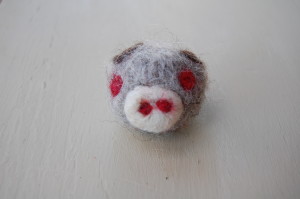
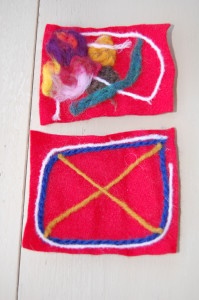
These are the wet felting balls and ropes he made.
I went to the following sessions:
30-Minute Mozzarella
Reproductive Cycle Management
Photographing Your Show Goat
Kidding- What is Normal and What is Not
The finished mozzarella. Nicholas in the mozzarella class. He said it was one of his favorite classes.
Michael attended the following sessions:
Goats-n-Herbs: Alternative Wellness for your Working Pets
Ten Tips for Keeping Your Goat Healthy
Herd Health- Management and Vaccinations
Efficient Farm Layout
My favorite class was the kidding class. Dr. Daniel Drake was the teacher and he was wonderful. In Oregon (and probably most areas) it is unusual to find a vet that really knows goats. Dr. Drake is a graduate of UC Davis which actually has a Dairy Goat Research Facility and students work/learn at the facility weekly. Jan Carlson, who taught the Reproductive class I attended is the facilities supervisor. Dr. Drake lives in Southern California and has his own dairy so he had a lot of experience and had all the answers we needed. For the most part goats give birth easily and there isn’t any need for you to get involved. But, there are some pretty scary situations you can find yourself in and he went over each in vivid detail. My big take home from this session was, if you must choose between saving the kid(s) or the doe, you save the doe.
The conference also gives vendors a chance to sell their products. There were big names like Wilco there but mostly it was local people who have created a product to help goat owners.
Some of the vendors:
Caprikoda Croft is where Brown Sugar came from. They developed a really good, yet reasonably priced, milking machine called “Simple Pulse”.
Fir Meadows, which is the farm of Kat Drovdahl MH (Goats-n-Herbs session), was also there selling their wonderful natural products for both humans and goats. She is a Master of Herbology and their farm is just south of us in Oregon. We re-stocked some things while we were there……no shipping cost, YEAH.
Another vendor I took note of was the Organic Fodder Farm out of Sandy Oregon. I have been interested in fodder for animals for a couple of years and it was nice to see someone locally develop a reasonably priced system to purchase.
Fodder (grass) is a very healthy food for goats (and other animals) and once you get past the initial cost of the system it is less expensive than other feed. You start with whole seed (wheat, barley,peas, etc) and keep it in a moist environment. By the sixth day you have the optimum nutrition in the fodder to feed to your goats. The system involves automatic watering.
There were other vendors all selling products they make from their goats (soap, lotion, cashmere wool, etc.) As well as things that goat owners might need (clippers, scales, stainless steel pails, etc). And a couple of people who make really cute things and sell them there. My favorite were the signs (made from re purposed pallet wood) with cute sayings on them.
All in all, it was a thirteen hour day well spent. We all enjoyed what we attended, seeing people we knew, and meeting new people.
Michael is taking this next week off of work. He had been gone for the previous two work weeks so it will be nice having him home and not doing his paying job.
Enjoy your week,
Karen
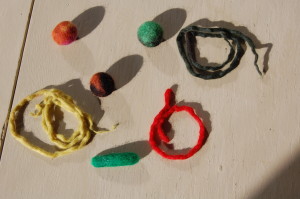
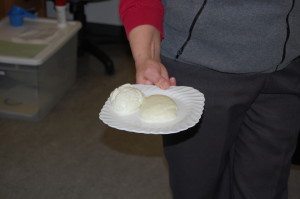
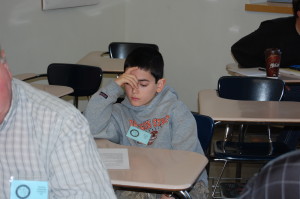
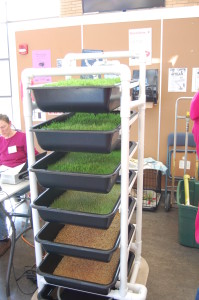
No Comments Yet